It’s one of those ‘where were you when you heard?’ moments. John Lennon, music legend, was shot and killed on 8 December 1980 outside the building in New York City where he was living - and the world momentarily stood still in sorrow.
Earlier that day famous photographer Annie Leibovitz had been with Lennon and his wife Yoko Ono at their apartment, taking pictures for the front cover of Rolling Stone magazine. The iconic picture to come out of that shoot featured a naked Lennon curled up around a clothed Ono. After Leibovitz had left, at around half past three, Lennon was interviewed by DJ Dave Sholin for an RKO Radio Network music show and then he and Ono walked with the radio station team to a limousine waiting outside. The couple were going to the Record Plant Studio to mix Ono’s song ‘Walking on Thin Ice’ which featured Lennon playing the guitar.
Waiting outside the Dakota was a group of people hoping to get Lennon’s autograph, including one Mark David Chapman, a 25 year old former Beatle fan who had become a born-again Christian and subsequently been angered by Lennon’s The Beatles are ‘more popular than Jesus’ remark of 1966. He also had issues with Lennon’s song lyrics, saying ‘He told us to imagine no possessions and there he was, with millions of dollars and yachts and farms and country estates, laughing at people like me who had believed the lies and bought the records and built a big part of their lives around his music.’
This was not the first time that Chapman had made the journey from his home in Honolulu, Hawaii to Lennon’s adopted city; two months earlier he had arrived in New York bent on killing Lennon, but had not gone through with it. This time was different. He had been standing outside the Dakota building since that morning and had even made himself known to Lennon and Ono’s son Sean, when he had come home with his nanny after lunch.
Chapman had with him a copy of Lennon’s latest album Double Fantasy (a collaboration with Ono that had been released in November) and without speaking he gave it to Lennon to sign. Lennon did so, asked Chapman if that was all he wanted and Chapman nodded. The moment was recorded by another fan, photographer Paul Goresh. Lennon then left to carry on to the recording studio.
After spending the evening in the studio, the couple returned to the Dakota. Chapman was standing in a shadowed area, but was seen by the apartment block’s doorman and a cab driver who was close by. Lennon walked past, briefly glancing over as if he remembered him from amongst the autograph hunters of that afternoon. Chapman fired at Lennon’s back, catching him with four of the five bullets he shot, before the doorman, an ex-CIA agent, wrestled the gun away from him and kicked it across the pavement. Chapman then sat down on the ground to wait for the police, holding a copy of The Catcher in the Rye.
Lennon, meanwhile, had managed to climb up the steps to the Dakota’s reception area, before falling to the floor, bleeding from both his back and shoulder wounds, and from his mouth. The concierge attempted to help him, but he could see that Lennon’s injuries were severe. He covered the musician with his jacket, and called the police.
When the men in uniform arrived they realised that Lennon needed medical help without delay and so, rather than waiting for the ambulance to arrive, they supported him over to their car and rushed him to Roosevelt Hospital’s (now called Mount Sinai Roosevelt Hospital) emergency room – although by this time his pulse was absent, and he’d stopped breathing. The doctors tried to revive him for almost twenty minutes but the extent of his injuries was too much and he passed away, with the cause of death being noted as hypovolemic shock due to over 80% blood loss.
The doctor who had chiefly worked on Lennon during his time in the ER stated afterwards that because of the expanding hollow-point bullets that Chapman had used there was no way that he could have survived the damage to his internal organs, even if the surgeons had been on hand the moment the shots had been fired.
Yoko Ono requested that the hospital did not break the news of Lennon’s death to the US media until she had gone home and spoken to Sean, in case he happened to be watching the television.
The tragic story finally reached the airways via a producer from WABC-TV (the flagship of the ABC network), who happened to have been in the waiting room at Roosevelt when Lennon was brought in. Once he knew the outcome of the situation he called his station, where the information finally filtered back to the president of both ABC News and ABC Sports, Roone Arledge. Arledge decided that the story should be given air time during the broadcast of Monday Night Football, by presenters Howard Cosell and Frank Gifford. Once this had gone out it soon hit the national news bulletins, with many radio stations suspending their normal programmes to pay tribute to one quarter of the best-selling band in the history of popular music.
At Ono’s request no funeral was held for Lennon; he was cremated at Ferncliff Cemetery, Hartsdale, New York State. This is the final resting place for a large number of celebrities including Malcolm X, Judy Garland, Joan Crawford and Thelonious Monk, amongst others, and Muppet genius Jim Henson was also cremated there in 1990. Yoko organised a ten minute silent prayer for Lennon’s fans in Central Park on Sunday 14 December, and approximately 225,000 people turned up to respect this. Millions of people around the world also stood in silence at the same time, including thirty thousand Lennon appreciators who came together in Liverpool, and every New York City radio station stopped broadcasting for those ten minutes.
As for Chapman, in 1981 he pleaded guilty to the murder of John Winston Ono Lennon and received a life sentence. After 20 years in maximum security Attica Correctional Facility, New York, he was eligible for parole, but so far his request for release has been turned down every two years since then, partially due to overwhelming public pressure to keep him in prison as well as requests from Ono that she, John’s sons Julian and Sean, and even Chapman himself would be at risk if he were to be released. In 2012 he was moved to Wende Correctional Facility in Buffalo, New York.
As a tribute Rolling Stone made Leibovitz’s photograph of Lennon and Ono its cover picture on the edition that was published on 22 January 1981; the rest of the magazine was given over to a commemoration of Lennon’s life. The surviving Beatles released a song to Lennon’s memory in 1981, All Those Years Ago, and Paul McCartney also recorded another dedication to Lennon, Here Today, on his album Tug of War, in 1982.
There are many statues, plaques and dedications to Lennon around the globe. In 1985 an area of Central Park was renamed ‘Strawberry Fields’ in his honour, marking a part of the park where Lennon had often visited. It was designed with trees donated from countries around the world, with a mosaic from Naples as its centrepiece.
To mark the anniversary of his death, an annual ceremony takes place in front of Capitol Records in Hollywood, and candles are lit by his Walk of Fame star.
On 8 December every year Yoko Ono also places a lit candle in the window of what was John Lennon’s room in the Dakota building.
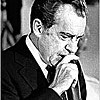
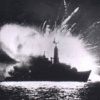
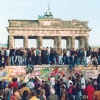
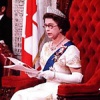
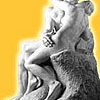
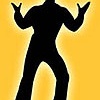
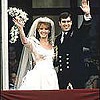
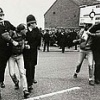
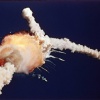
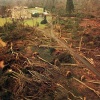
Do You Remember The Assassination of John Lennon?
Do You Remember The Assassination of John Lennon?